B.R. Sanders's Blog, page 13
January 22, 2016
Book Review: THE BUTCHER’S WIFE
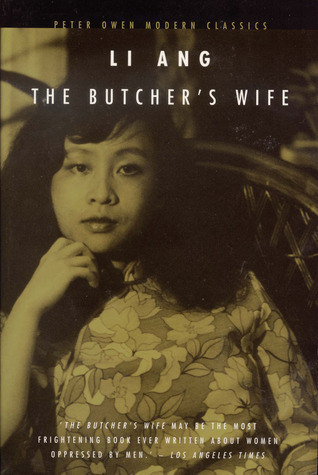
Notes on Diversity:
Diversity is the wrong word here1; this is a Taiwanese book written for a Taiwanese audience populated by Taiwanese people. It’s authentic. If you’re looking to read outside of Western authors, and you’re looking for something particularly dark and excruciatingly feminist, then check this out.
There are no queer characters, but Western notions of queerness may not fully apply here, so I may well have missed some subtext. There are characters who deal with physical disabilities–Auntie Ah-Wang hobbling to and fro on her bound feet is a particularly striking example.

This book deals, explicitly and vividly, with sexual and physical abuse. It is not an easy book to read. Much of the plot and much of the text is devoted to detailing how Lin Shi, the main character, tries and fails to cope with her husband’s continued abuse.
Review:
Li Ang’s The Butcher’s Wife is harrowing. And feminist. And brilliant.
I first read this book in college. I worked at the library circulation desk; someone turned it in and I picked it up and read it. I didn’t know anything about it. I read it, and it was horrible and fascinating and etched itself into my brain. I’ve thought about it off and on in the years since and recently ordered a copy and reread it. It definitely held up to the reread.
The Butcher’s Wife is about a woman, Lin Shi, in a small village in Taiwan who is sent off to marry a pig butcher by her uncle, Chen Jiangshui. Right from the start, she’s traded like cattle, treated like goods: ownership of herself, her fate, her body is clearly not hers. Her husband is a brutal man; whether he is drawn to the slaughterhouse day in and day out because of his inherent brutality or whether his brutality is a response to his murderous line of work. In either case, his brutality remains a fact. He rapes Lin Shi. He beats her. He psychologically and emotionally berates her. He does these things, it seems, simply because she’s there. Simply because she exists, and because she now belongs to him.
The structure of the book is such that we know how the story ends before it even begins. In my copy, Pig-Butcher Chen’s fate is revealed in the Author’s Preface. If you skip that, then it’s revealed on the very first page of the book, in a fictitious news report2. Lin Shi kills Chen Jianshui. This isn’t a spoiler; this is the conceit of the book. The book isn’t about what will happen to Lin Shi. We go in knowing. The book is about why she does it. And in that narrative design, Li Ang gives Lin Shi and immense amount of power and agency within the story.
This is in keeping with the book’s overall themes of control and power. The book zeroes in on women, their interiority, how they relate to or don’t relate to each other. There are occasional scenes from the perspective of Lin Shi’s husband, but even those are mostly his ruminations about the women in his life, either Lin Shi or the prostitutes he frequents3. Lin Shi spends a lot of time alone, trying to fill the utterly boring hours before her terrifying husband come home. Every day, she goes out to do laundry, and through that chore we come to understand her relationship to and her place among the village’s other women. It’s a complex and shifting situation that Lin Shi never quite successfully navigates.
What I am left with most, though, is the way The Butcher’s Wife spells out how utterly suffocating and unrelenting patriarchal control is/can be. Lin Shi endures and endures and endures until she can’t anymore. And she snaps; she kills her husband. She metes out this great and terrible and vicious act–this irreperable and irretreivable act–that is hers and hers alone. Or so you would think. But even that is stripped from her:
Chen Lin Shi’s confession defies all reason and logic, for, since ancient times, a murder of this sort has always been the result of an adulterous affair.
On the very first page of the book we have proof that Lin Shi’s act has been drastically rewritten in the social narrative of the village. She didn’t really do it on her own. she must have been sleeping with another man. She must have killed her husband at his behest. That’s how it always is. That’s how women are. Even if they kill you, it’s not really them killing you–it’s really the other man wielding them as a weapon against you.
Even in her own confession, Lin Shi is silenced. In a book absolutely chock-full of horror, this is one of the most horrifying elements to me.
(If you’d like to check out more about this book, I highly recommend this review on Goodreads.)
1I’ve got a post brewing about diversity and the way this term is loaded. Watch this post if that’s a topic that interests you.
2Li Ang, in her Author’s Preface, makes clear that the news report, though fictitious, has roots in actual reported cases in mainland China. Another observation: the structure of this book, along with its length and use of diegetic extra-textual elements like the fake news clipping (here’s the ending! here’s how it happened from several points of view!) reminded me quite a bit of Herman Melville’s Billy Budd on this reread. Which was not a comparison I was expecting to draw. So, now I want to go reread Billy Budd.
3One of the most interesting parts of the book, to me, was the contrast between Chen Jiangshui’s relationship to Lin Shi–a woman he doesn’t know at all and doesn’t care to know, who he treats solely as an object– and his relationship to his particular favorite whore, Golden Flower. With her, he is companionable, almost sweet. They know each other as people. Is this because their relationship is still transactional? It’s unclear, but it’s certainly different than how he treats Lin Shi.
Want posts like this delivered to your inbox? Sign up for my newsletter!


January 20, 2016
ARIAH on Kindle Unlimited!
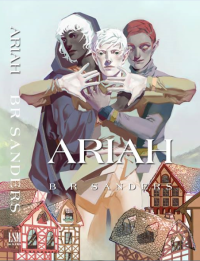
Been meaning to pick up a copy of Ariah but lacking in cash? Perhaps you have a Kindle Unlimited account?
It’s your lucky day! Ariah is now available on Kindle Unlimited, which means subscribers can read it for free! Yay for lending libraries!
(And if you do end up reading it reviews are always welcome! No obligation, of course, but always welcome!)


January 19, 2016
Disrupting Publishing: 1/20/2015
“Race, Publishing, and H.P. Lovecraft: A Conversation with Daniel Jose Older and Victor LaValle” at Tor.com
Older took the idea in a fascinating direction: “I believe in the revolutionary power of happy endings. Especially when you’re dealing with marginalized people… we need to see that there’s hope.”
“Unearthing the Sea Witch” by Nicole Pasulka and Brian Ferree for Hazlitt
In the film, Ursula is a fat villain who preys on a skinny heroine. Her largeness is presented as evidence of her evil nature. But in this case, that evil nature is also liberating. The character is an inversion. Someone who made something we thought was impossible—a mermaid walking on land, for example—possible. In treading the fine line between homage and mockery (not to mention between male and female), a drag queen does this too.
“Buzzword” by Alyssa Wong for Lightspeed‘s POC’s Destroy Science Fiction Kickstarter*
The more you read, the more you realize the truth. These posts were never about you as a writer, or even as a person. They’re about what you represent. They’re about white supremacy and yellow peril, a majority’s fear of growing irrelevant and being displaced. It’s about hating you for taking up space they believe they deserve.
There is a lot of coded language you are subjected to, as a QUILTBAG writer, in publishing. You're told you're a "hard sell"
— Tess Sharpe (@sharpegirl) https://twitter.com/sharpegirl/status/676455891462283264″>December 14, 2015
//platform.twitter.com/widgets.js
*Psst I am not telling you how to live your life BUT I 100% PLEDGED FOR THE POCs DESTROY ISSUE AND I SERIOUSLY DOUBT I WILL REGRET THAT DECISION, FYI.


January 10, 2016
Book Review: FIREFIGHT
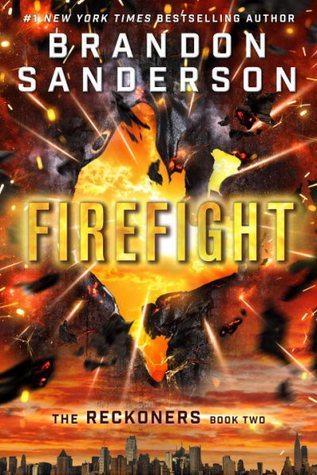
Firefight is Book 2 in the Reckoners series. You can read my review of Reckoners Book 1, Steelheart, here.
FYI, there are some minor spoilers in the footnotes.
Notes on Diversity:
Compared to Steelheart, there was nowhere to go but up, really.

Sanderson did go up. He could have kept Firefight populated by only white people1, but he branched out a little. The book is still defined by a masculine voice and masculine quest, and the team of Reckoners is still led and organized around male leaders (though women are present), but at least there are some prominent characters of color: Regalia and Newton, specifically.
But. Regalia, the main antagonist of the book, is a Black woman. That in itself is not a problem. Black women can be the bad guys, sure. But. In making Regalia an Epic–specifically an Epic with powers that manifest as omnipresence and her positioning as the owner/protector of Babilar, she is like a cross between the Magical Negro trope and the Black Boss Lady trope.2 That is to say that clearly some effort went into making her race visible, but I’m not sure Sanderson pulls it off. She seems like a collection of cliches to me, which is distasteful in itself. Readers of color might bounce especially hard off her. YMMV.
And Newton zips around, being horrible, for a long, long while before being revealed as Asian canonically. Given her assumed Epic name, and given that we get no actual description of her as a person–but elaborate descriptions of the havoc she wreaks–I assumed she was White until halfway through the book. That she was Asian seemed to be mostly an afterthought.
Review:
I read Firefight on the strength of the plotting in Steelheart. But Firefight lags. It’s a middle volume with middle volume weaknesses: it builds lore up, and the plot of this volume is mostly setup for the Grand Finale coming in the next book.
It’s not a terrible book. I devoured it in days. I would have devoured it quicker except that Sanderson indulged far too often in his gimmick of writing in David Charleston’s terrible metaphors. One or two absurdly bad metaphors I can handle, but not one per page. David Charleston, as a character, seemed to be on a one-man-mission to teach himself how to produce elegant metaphors on demand, going so far as to stop conversations with his elusive Epic girlfriend who is maybe but probably not evil but that everyone thinks is evil but he knows better in order to write down her better metaphors.
The book could have been trimmed. Reading it felt like a prelude, or perhaps, the first act of the final volume. The Reckoner series should have been a duology, maybe, not a trilogy. Too much setup, too much effort, for too little payoff. Too many characters and settings that we’ll likely not see again in the third volume.
There were interesting things in the book. The difference between how David expected Obliteration to be and how Obliteration actually was was well done–but again unless this plays some role in the last volume this could have been a separate short story.
In sum, those who loved Steelheart and are captivated by the Reckoners will probably love this slightly less. It’s a little meandering. If you’re looking for diversity, this isn’t and never was the place to look. I’ll check out Calamity because I’ve read the rest, so why not?

————-SPOILERS BELOW————-
1I think Nightweilder in Steelheart was Asian? He came and went so fast that honestly I don’t really remember, but I think so. Pretty sure everyone else was White, though. And despite Tia and Megan being in the mix it read like a sausage party. A straight sausage party.
2The fact that both of these tropes are typically reserved for ‘positive’ portrayals of racist caricatures actually fits with what Sanderson does with Regalia’s character over the course of the book. Regalia has an aborted redemption arc; she’s dying of cancer, and wants to hand her city over to a ‘trustworthy’ Epic–a one Jonathan Phaedrus, Prof, of the Reckoners. Which means her entire plot is about a Black woman handing her power over to a White man. Yes, she is dying. Yes, they were friends. BUT STILL. THAT IS WHAT THE BOOK HINGES ON. It…rubbed me the wrong way.
Want posts like this delivered to your inbox? Sign up for my newsletter!


January 6, 2016
Goals for 2016

Novels
Under Contract
Extraction (A Tale of Rebellion, Book 1)
Top priority. First draft is in already! Contract is signed! I need to go over the editor’s comments and do some revisions (as always I have ideas!!). There’s cover art to be discussed. I think there’s a good chance this book will make it to print by December.
The Search
A companion novel to Ariah, the first draft of this one is done. I need to reread it, revise it (I have ideas already!!), and send the draft in to my publisher. Since it’s a sort-of sequel, it’s covered under Ariah’s contract. Can do this in late February through March-ish.
On Spec
The Analog System
This was my 2015 NaNo project. I don’t have any idea if it will ever see the light of day, or who would publish it, or anything like that. But I’d like to carve time out in early summer to think through revisions on this. I’d expect it to be a burn-it-to-the-ground complete rewrite type thing.
Mage-Born
I wrote this novel years ago, back when I was pregnant. I love this book, but it’s a truly strange thing, and it needs a rewrite. I think I’m ready to do it now. A project for next fall, maybe? It’s a book about pregnancy, about the body horror and lack of control that sometimes comes with it, about the power and pressures that pregnant bodies hold. It’s a travel book about a man and a woman who do not fall in love but who are companions. It has carnivorous trees in it. It’s set in the Aerdh universe. Again, no idea if it will ever see the light of day, but fun to work on and polish and think about.
Vilahna (A Tale of Rebellion, Book 4)
This is one I have yet to write. Books 2 and 3* are already drafted. Book 2 has already been drafted twice so far (though, given things that happened in Book 3, the ending needs to be rewritten yet again). But the final volume needs to be written. I am thinking this is a winter project. I have the plot loosely outlined, I know where it’s going, I just need to actually write it.
Short Fiction
Mostly, I want to keep working on short fiction and keep improving the quality of my short fiction. In 2013, I wrote four short stories. In 2014, I wrote six. In 2015, I wrote eight. Short fiction does not come naturally to me. I tend to think and write in long bursts, in novels or sagas, in many thousands of words. But I love short fiction. The brevity of short fiction is so wonderful, and it improves one greatly as a writer–across the board, in all mediums.
In 2016, I’d like to write twelve short stories–a short story a month. And I’d like to keep subbing high. This year I tried consistently to place stories in pro markets. I haven’t done that yet, but I’ve gotten very close a couple of times, which was heartening. But mostly, one improves by doing. So: twelve short stories. One a month.
Patreon & Newsletter
Patreon
I launched one! I…did that thing I do where I run into a situation half-cocked and maybe didn’t think it through? I need to take a step back and plan out the rewards (likely folding in the story-writing goal above). I can do this.
In other news, $5 pledgers, I am not sweating the novella at all. It is many-thousands-of-words and I already have several ideas for it.
Newsletter
This is another thing I launched and learned a lot by doing in 2015. Time to think though what’s been working, what hasn’t been, and figure out how to streamline this puppy (and how to get the newsletter and the Patreon and the blog to all go hand-in-hand without being overly redundant).
Content strategy–I will master you.
Various & Sundry Pursuits
As for my various and sundry other writerly pursuits, I would like to do the following in the next year:
(Mostly) Continue with the blogging schedule that I developed in 2015
Have a review of some kind once a week up on Fridays.
Continue reading with a focus on stories featuring marginalized themes/characters and creators from a marginalized/diverse background and/or social position.**
Incorporate more guest posts and guest reviews on this blog! The more the merrier!
Go to Sirens Con again. Loved it.
Continue to pursue nonfiction writing as the mood strikes.
*If you’re interested in tentative titles for the A Tale of Rebellion series, Book 2 is called The Incoming Tide and Book 3 is called The King and his Makers.
**The language here is clunky as shit, I recognize that, but I’m struggling somewhat to articulate that ‘diversity’ is loaded and centers dominant groups. Post to come, most likely.


January 1, 2016
It’s 2016

May this year be better than the last! May 2015 fade gently into the darkness, and may 2016 come roaring in with great triumphs!
I’m not one to set goals or resolutions. I’m going to keep reading books with an eye towards diversity/marginalization and reviewing them here. I’m going to keep writing and struggling with how to do that ethically with the particular constellation of privileges and marginalizations I live within. I’m going to try and get some stuff published.
Hopefully I’ll have some more guest posts by fabulous authors in 2016, too!


December 31, 2015
2015: Year in Review (The Infographic)
December 30, 2015
2015: Year in Review (Thoughts & Such)
All things considered, I had a pretty good year writing-wise. Here are some highlights:
Ariah got published.
This was my book, you know? I’d worked on it forever, subbed it forever, and then it was out there.
I learned so much about book marketing on the fly with Ariah. I sent so many review requests. I did at least twenty guest spots on far-flung blogs (anywhere that would have me). I ran a ton of giveaways. Ultimately, I think, it’s mostly about getting a book in the hands of the right reviewer at the right time.
Really, for indie books (and I think even for traditionally published books) the strongest marketing tool is word of mouth. Patience has been my biggest obstacle, honestly, but I’m slowly gaining a readership.
I broke out of my shell as a writer and made some lovely writer friends.
I started using Twitter in earnest this year, and it was a great decision for me. Twitter, plus blogging, means a ton of connection to other writers. And I went to my very first con this year–Sirens was awesome! I got to meet some writer friends in the flesh, which was so cool!
I tend to write in isolation, but I still need a community. I love to talk about process and books and technique and what I’m writing and why I’m writing it. My partners quickly get fatigued on my subjects, so twitter is an excellent outlet for this.
I got vocal about diversity in publishing.
It was inevitable. I’ve always been passionate about social justice, so the intersection between writing and social justice was bound to pop up at some point. I think about this stuff a lot, in both my own writing and in others, and doing the disrupting publishing roundups every week or so has been eye-opening and informative.
This year I’ve also been explicitly reading and reviewing books with an eye towards diversity (you can see notes on diversity in the book reviews here and a call for diverse books in my review policy here). This, too, has been eye-opening and informative. I’ve spent a lot of time this past year thinking about what I can do, as a person with multiple privileges and marginalizations, to make publishing more diverse from within. What is it ethical for me to be writing about? When should I step back and simply promote voices? When am I taking up space inadvertently? Heavy, important questions.


December 29, 2015
Short Stories I Loved in 2015
I read a great deal more short fiction in 2015 than in years past. Here are the short stories I most enjoyed in no particular order:
“Heaven Under Earth” by Aliette de Bodard
“Hungry Daughters of Starving Mothers” by Alyssa Wong
“Geometries of Belonging” by Rose Lemberg
“Shimmering, Warm, And Bright” by Shveta Thakrar
“We Love Deena” by Alice Sola Kim
“The Occidental Bride” by Bejanun Sriduangkaew
“All in a Hot and Copper Sky” by Meg Arkenberg


December 28, 2015
Books I Loved in 2015
Book reading–a year in review! Here are the books I read and luxuriated in, the ones I waxed rhapsodic about and pressed into the hands of loved ones. The ones I’ll probably reread in years to come. Links are to the full reviews posted on this website; text for each book is excerpted from said reviews.
So. What are you in the mood for?
Something Queer and Magical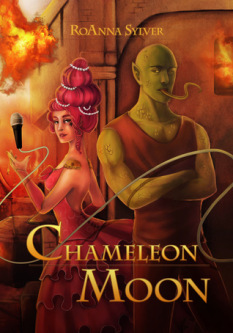
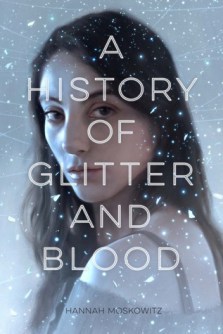
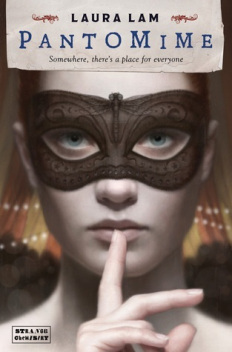
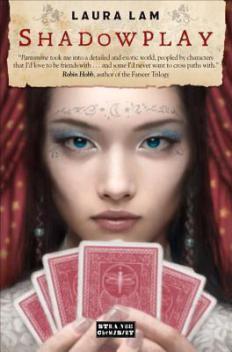
Chameleon Moon by RoAnna Sylver
The book follows a tight-knit group of erstwhile superheroes–and most of them are dealing with mental and/or physical disabilities. A number of them are clearly people of color. The main character is a trans woman, and she’s basically the best!! There is am interracial queer poly family that is sweet and functional.
A History of Glitter and Blood by Hannah Moskowitz
mkl
The Micah Grey Series by Laura Lam
Micah’s voice is beautifully written. Lam captures the confusion of adolescence, the way Micah’s gender and biological sex adds to that confusion and isolation, and the anger Micah feels when he realizes that being intersex shouldn’t isolate him from those around him but does. At the same time, Micah begins a relationship with female his acrobat partner, Aenea, while nursing a crush on the White Clown of the circus, Drystan. Micah’s burgeoning bisexuality provides another welcome thread of the book, which Lam handles with sensitivity and grace.
Something Brutal And Righteous and Epic

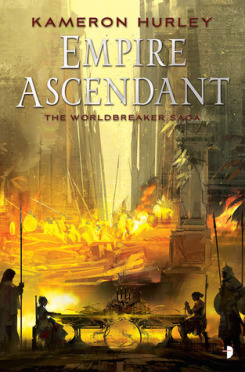

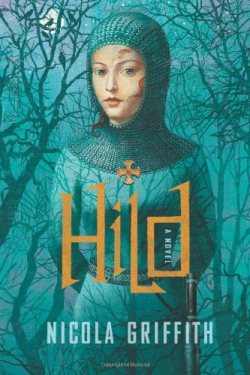
The Worldbreaker Saga by Kameron Hurley
Like Game of Thrones, The Mirror Empire follows multiple POVs, but nearly all of these characters are women and I read all of them as people of color. They are strewn across the world, and slowly their stories intersect as it becomes clear that their entire world is beset by a force from without, brought to bear by an ascendant star and the magical forces that star brings.
Who Fears Death by Nnedi Okorafor
Told in retrospect to her captors by a woman facing execution—a woman who has changed the world around her in fundamental and unexpected ways and sacrificed herself to do it—the teller does not flinch away from the grisly and vicious details of her story. She revels in them. As much a book about hope and change as it is a book about the horrors of complacency, WHO FEARS DEATH is a book that embraces anger, and for that if nothing else, I loved it.
Hild by Nicola Griffith
There is also, in Griffith’s writing, an immersiveness of a very foreign world. The trick is that it’s a world that once existed but one incredibly different than what we live in now. Things we take for granted, like the rapture of hearing music for the first time, or the sheer political power of being the only faction on an entire island who is literate.
Something Rooted and Specific
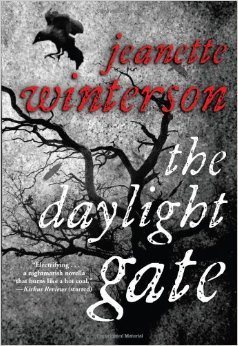
Black Beauty by Constance Burris
Virtually all the characters are Black, and they live in a specific locale–one apartment complex in Oklahoma City. The specificities in the book really do add to the authenticity, the reality of it, which heightens the horror embedded in the stories, even as elves start showing up and snakes start sprouting from people’s heads. These stories are deeply, deeply rooted in an intersectional experience of Black womanhood.
The Daylight Gate by Jeanette Winterson
Jeanette Winterson’s THE DAYLIGHT GATE takes a historical instance—the first documented witch trial in English history—and spins around it a tale of what might have happened.
Something with a Badass Girl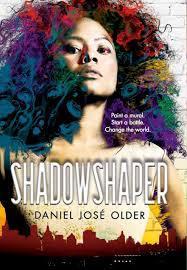

Shadowshaper by Daniel Jose Older
Sierra Santiago, the main character, is a revelation: an Afro-Latina with agency, with consciousness, replete with unrelenting badassery.
Niko by Kayti Nika Raet
Niko is intense, observant and suspicious. She is shaken and vulnerable and ferocious. She is a lone wolf and a caretaker. Raet writes Niko with lovely subtlety, letting her grow and stretch over the course of the book. Niko at the end of the book is very different than she was at the beginning. She is still very much herself, but the course of events has marked her, and she is changed.








